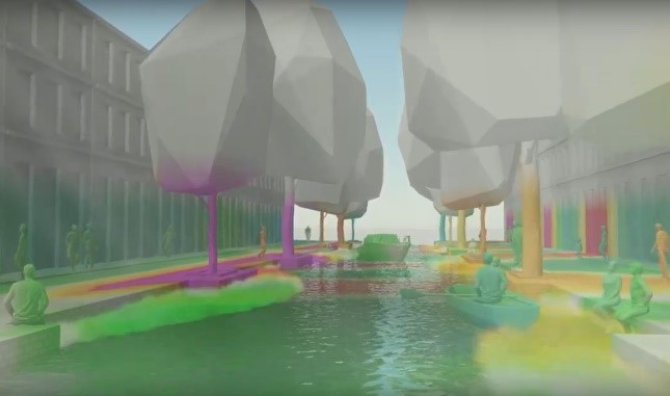REALCOOL: Really cooling water bodies in cities (LSP)
‘Really cooling water bodies in cities’ (REALCOOL) was a Research Through Design (RTD) project exploring effective combinations of shading, water vaporisation and natural ventilation around small urban water bodies. Small urban water bodies were commonly believed to solve urban heat problems. However, recent research indicates a possible misconception. At the same time, there are indications that shading, vaporising water and ventilation help keep cool urban water bodies and surroundings. Still, exploring combinations of these strategies in urban design and communication to design professionals resulting is necessary. REALCOOL catered to this demand, designing virtual prototypes of maximum cooling combinations of shading, water vaporisation and ventilation around small urban water bodies. We tested a) designs on microclimate effects with simulations, b) applicability with a broad triple helix stakeholder group and c) aesthetical perception with the public. Our urban climate simulation showed small urban water bodies do not have relevant cooling effects. The prototypes developed proved useful in practice as conceptual design guidelines. A final evaluation of REALCOOL’s advanced RTD methodology with the stakeholder group indicated RTD is a reliable method to combine scientific and design knowledges into robust, widely applicable new spatial design guidelines.

Case Description
Background
Urban design literature often asserts urban water bodies having a cooling effect on surroundings. However, recent research on larger water bodies shows possible limited effects by day, along with night-time warming. The question arose as to whether smaller urban waters would show similar effects. There are also indications that shading and vaporising water and proper ventilation might help cool urban water bodies and surroundings.
Research objectives
REALCOOL aimed at understanding smaller urban water bodies’ micrometeorological effects and designing prototypical solutions combining cooling strategies (shading, water vaporisation, ventilation) around small urban water bodies. The prototypes to be developed conveyed understandable information about spatial configurations and biometeorological effects for urban design practitioners.
Research approach
To understand small urban water bodies’ micrometeorological effects, micrometeorology simulation software Envi-met with a new plug-in for water evaporation was employed. We found that smaller water bodies’ cooling effects are rather limited. Based on this finding, we initiated the project’s main part, developing design guidelines with an interdisciplinary team and an advisor team from practice.
These guidelines were based on a ‘Research through Design’ (RTD) methodology (see Fig. 2). The RTD started defining environments into which different design experiments could be projected: 3D spatial representations of typical Dutch urban water bodies. Then, the RTD process started, each iteration having designing and testing components. The designing involved experimenting with combinations of shading, vaporisation and ventilation strategies around water to reduce people’s thermal load, while also taking into account practical criteria.
Testing was done on design solutions’ performance: biometeorological and hydrological functionality, combinations with other urban functions, implementation costs, maintenance requirements and public health effects. Testing also included an online visual questionnaire (photorealistic images) aimed at how the general public would perceive new environments.
Subsequently, we generated animated design guidelines, based on our prototypes, that visually communicate the prototypes’ 3D settings and the designs’ invisible microclimate science.

Findings
Cooling effects of small urban water bodies on air temperature are rather negligible, particularly at night. It appeared little can be done through urban design to cool water. Hence, we implemented strategies that cool people near water, but not water itself; these interventions led to significant local effects. Our design prototypes increased rainwater storage capacity. Our visual inquiry results show that new designs were more attractive than current situations. The design prototypes were evaluated as easily applicable and understandable by practitioners.
Stakeholder involvement
REALCOOL had intensive cooperation with an advisory team from practice (municipalities, water boards, design offices). We met at least twice yearly to discuss design iteration outcomes and requested their assessments. This helped generate results applicable in practice. Public involvement through online inquiry about new urban environments was valuable to understand future effects on citizen perceptions.
Without the entire quadruple helix’s involvement, REALCOOL would not have been as successful or as impactful.
Research Highlights
- Smaller urban water bodies do not cool, disproving earlier conceptions
- REALCOOL brought about an extension of the Envi-met simulation software
- REALCOOL caused a methodological shift in landscape architectural RTD approaches
Impact
REALCOOL had impact at an early stage, engaging with the professional community and later with a broad societal public, leading to many invitations to present the project to professionals and also during the Dutch Design week. The project was mentioned in a state secretrary’s letter to parliament (kamerbrief). We are currently implementing the knowledge from REALCOOL in other projects where urban water bodies are (re-)designed.